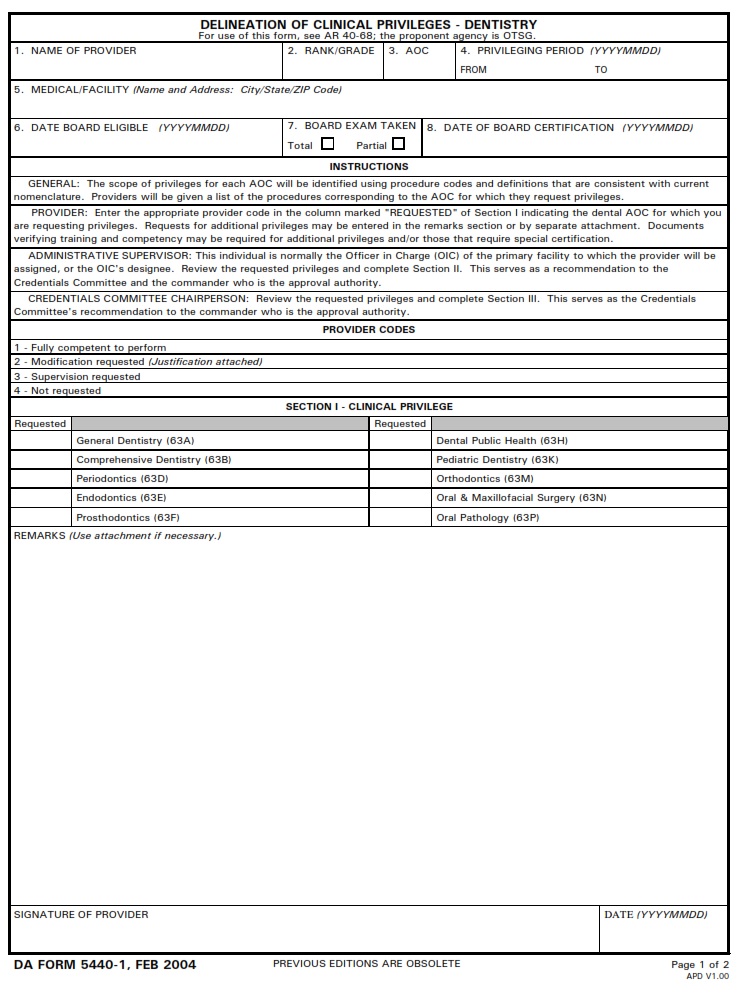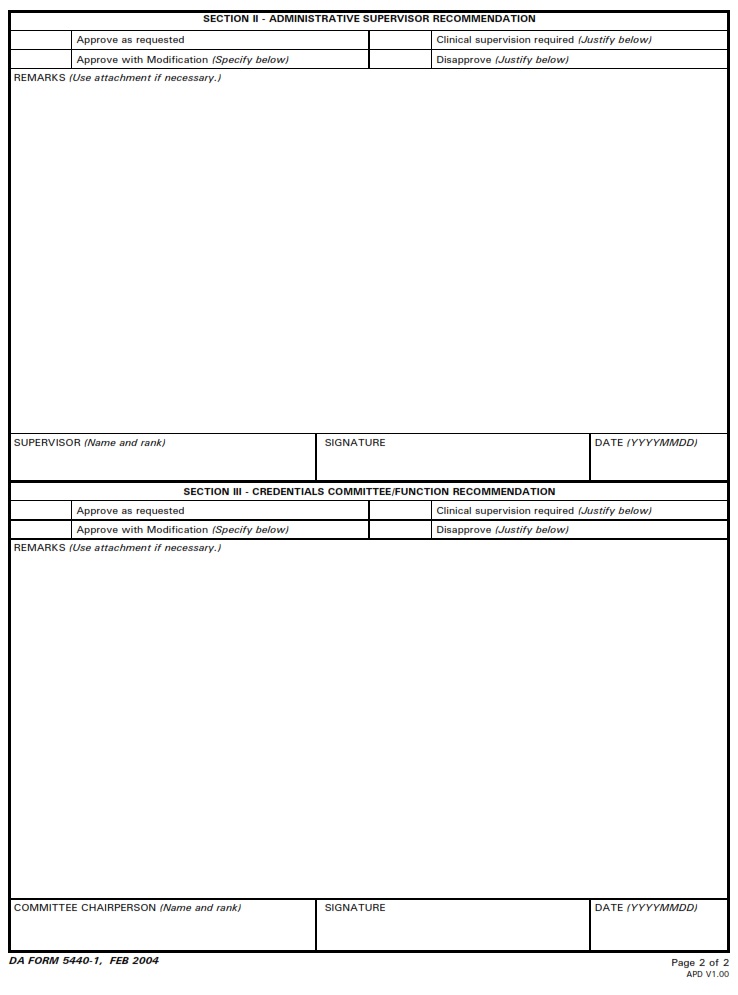Table of Contents
FREE-ONLINE-FORMS.COM – DA Form 5440-1 – Delineation Of Clinical Privileges-Dentistry – When it comes to the field of dentistry, precision and expertise are paramount. Imagine a scenario where a dentist’s skills are not accurately matched with the clinical privileges they are granted, leading to potential risks for patients. This is where DA Form 5440-1 – Delineation Of Clinical Privileges- Dentistry comes into play as a crucial tool in ensuring that dentists are appropriately credentialed for the procedures they perform. This form serves as a roadmap, outlining the specific clinical privileges each dentist is qualified to carry out, thereby safeguarding the well-being of patients and upholding standards of care within the dental profession. Let’s delve deeper into how this form shapes the landscape of dental practice and why its meticulous completion is essential for both practitioners and those seeking oral healthcare services.
Download DA Form 5440-1 – Delineation Of Clinical Privileges-Dentistry
| Form Number | DA Form 5440-1 |
| Form Title | Delineation Of Clinical Privileges-Dentistry |
| Edition Date | 2/1/2004 |
| File Size | 36 KB |
What is a DA Form 5440-1?
The DA Form 5440-1 serves as a crucial document in the realm of clinical privileges for dentists within the U.S. Army. This form is specifically designed to delineate and verify the clinical capabilities and responsibilities of dental practitioners, ensuring that they are qualified to perform certain procedures within their field of expertise. By detailing specifics such as scope of practice, practitioner qualifications, and limitations on procedures, this form plays a vital role in upholding standards of care and patient safety.
The meticulous process involved in completing a DA Form 5440-1 underscores the importance placed on ensuring that only competent practitioners are granted clinical privileges. It requires thorough documentation of training, experience, certifications, and other qualifications pertinent to dental practice. Ultimately, this form acts as a safeguard against potential lapses in quality or competence by providing an official record that can be referenced when assessing a dentist’s fitness to perform specific procedures.
Where Can I Find a DA Form 5440-1?
If you’re in search of a DA Form 5440-1 for delineation of clinical privileges in dentistry, look no further than official military websites such as the Army Publishing Directorate or the Defense Health Agency. These platforms typically offer readily accessible and updated forms for military personnel and practitioners. Additionally, dental clinics within military bases or installations often have physical copies available for use.
Alternatively, reaching out to your unit’s administrative office or medical services department can also provide guidance on how to obtain a copy of the DA Form 5440-1. Having this form on hand is crucial for dental professionals seeking to specify their clinical privileges within military healthcare settings. By harnessing various resources available through official channels, dentists can streamline their administrative processes and ensure compliance with regulations regarding clinical practice in the military healthcare sector.
DA Form 5440-1 – Delineation Of Clinical Privileges-Dentistry
DA Form 5440-1 is a crucial document that plays a significant role in the field of dentistry by delineating clinical privileges for dental professionals. This form serves as a detailed blueprint outlining the specific tasks, procedures, and responsibilities that a dentist is authorized to perform within a healthcare facility. By clearly defining these privileges, the form ensures precision and accountability in dental care delivery.
Dentists who undergo the process of requesting clinical privileges must demonstrate their competency and proficiency in various areas of dentistry. From surgical procedures to preventive care practices, each privilege listed on DA Form 5440-1 reflects the extensive training and expertise required to provide high-quality dental services. Ultimately, this form not only safeguards patients by ensuring they receive treatment from qualified practitioners but also helps healthcare facilities maintain rigorous standards of care across their dental departments.

